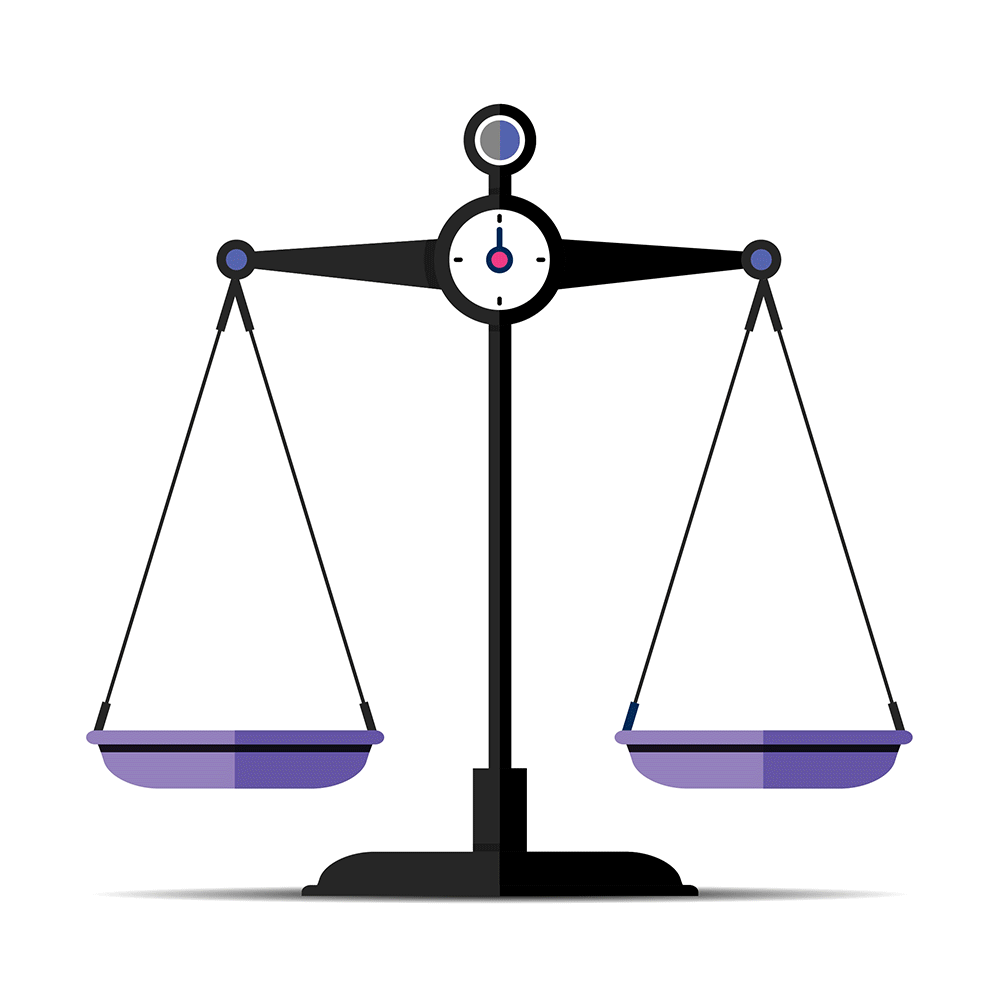Human decision-making is complex, with traditional theories focusing on rational choice models. These models assume that individuals make decisions by systematically comparing the costs and benefits of different options. However, it is now accepted that cognitive and personal biases play a part, and making a decision is a process that involves conscious and unconscious factors where emotions are clear influencers in this process (Emotion and Decision Making).
What does this mean for marketing? Buying decisions involve rational and emotional elements and the effectiveness of your marketing depends partly on balancing both approaches. There is a fight for share of voice across the different channels and we know from our own research that 4 in 5 marketing decision makers see marketing as a top priority in 2024 with an increase in marketing spend. In this article, we aim to give you the tools to understand how rational and emotional marketing works in practice and how you can use them to shape your B2B marketing strategy.

Rational marketing typically focuses on the features of a product, whereas emotional marketing attempts to create emotive connections with the audience. Emotional marketing takes the facts and the audience into account and turns them into real benefits. What does this product mean to you? How will it change your life? How can we get you to dream a bright reality with this product or service in it? Emotional marketing creates a desire to own the product; it makes you imagine a better future.
Research shows that 75% of B2B brands fail to produce effective advertising with the potential to drive long-term growth. It also suggests that B2B fails to deliver emotion, fluency and intensity which helps a brand grow by 3% in the long term. As clearly stated by John Lombardo, the Global Head of Research at the LinkedIn B2B Institute: ‘Inspiring emotion in B2B ads is 7 x more effective than delivering rational benefits alone’.
Emotional and rational by example
Let’s talk about a product we are very familiar with: mobile phones. We might think it is obvious that good marketing of phones needs to provide all the technical information – rational marketing – ‘give me the features to make an informed decision!’. Both approaches are often used in mobile phone marketing, but the effects of emotional marketing make the whole difference.
The mobile phone example is relevant because there is a big perceived divide in the market between iPhone and Android that started when the first iPhone was launched in 2007. Current stats show that in the UK, iOS usage is 52.28% vs. Android with 47.16%. The arguments around what devices are better are endless. In a recent review, MKBHD developed a system to compare them side by side. Not surprisingly, although there are winning features on each side, ultimately it comes down to personal preference. The real winners are the consumers, as brands continuously compete heavily to become better all the time. This leaves us thinking that both sides are equally good choices. At the same time, we know that our perception of both sides is very different.
Apple’s marketing strategy is not an afterthought. The consistent experience is conceived at every touch point to set the iPhone apart. iPhones are aspirational and there is even the consideration to distance themselves from low-cost inferior products when the devices become old.
The iOS ecosystem idea is not unique, but you get it with Apple, and this alone becomes a big reason to stay with the brand, along with the support. When I talk about my iPhone, I can’t stop describing it as a feeling of being part of something great. Tim Cook would love to hear me now. I have been clearly under the influence of some powerful emotional marketing, and I am OK with that.
Apple understands that highlighting how a product can improve people’s lives is more effective than bombarding them with technical details. Important technical updates can be found on their website if needed.
Now let’s talk about the Apple Vision Pro. The reviews about it are mixed. Mrwhosetheboss thinks that Apple doesn’t really want you to buy it, MKBHD exposes what is missing, Neil Patel bought one and returned it because it is not usable and you can’t get any work done with it.
The truth is, it is heavy and a bit absurd to wear, it creates a lonely place for the user and you can’t use the tools and services you would expect to as it is limited to a few apps preloaded by Apple. If you want it as a useful work tool, it is not. There is a common agreement that the product is not final, it is a first generation of a new kind of thing. Still, the technology behind it is something that has never been seen and it is groundbreaking.
How was it marketed? Apple labelled it as a spatial computing device, not an AR or VR device, distancing themselves from other products. The videos demonstrating the product are effective for those 3 or 4 cases, but customers have rapidly identified the problems and there are too many to make it commercially possible, or at least with the current version.
This time Apple fell short at establishing that emotional connection with the audience and even though it had pretty advertising, it feels like they stopped at the features – I can’t picture a better reality for me once I buy it, maybe because there isn’t one. It is known that the value of luxury products is deeply intertwined with the profound, meaningful, intimate, and emotional connections they forge with their audience. And this is where their marketing fails to resonate.
Rational and emotional marketing in B2B
We can transfer some of this knowledge to the B2B world. In the B2C world, decisions tend to be more personal. In contrast, B2B buying involves making big decisions and closing large deals that affect whole organisations. It is an emotional process where those emotions become a great source of inspiration for your marketing. Aim to justify the buy, remove the barriers, create a sense of security.
For our marketing to be remembered, it needs to evoke an emotional response. An interesting case we have seen is the use of motivators such as animals to dramatically boost effectiveness. It’s the idea that ‘human see dog, human like dog, human remember scenario when seeing dog’. Although we agree with that to a certain extent, we also know that brands need to engage at a deeper level. It is a balancing act, and in B2B telco especially, education and intelligence is needed as propositions can be complex and hard to differentiate.
As we know, the B2B buying cycle is typically long. According to Innovative Growth Strategies for B2B Marketing, rational marketing is more appropriate for advanced stages in the cycle, when your buyers are in the market. In early stages you really need to create that emotional bridge that will make your brand memorable and will get your audience to come to you when the time is right. From the same source, it is recognised that the majority of decision makers belong to Generation Z and millennials at this point in time, characterised for their flexibility in adopting new brands and being influenced. That comes as great news for encouraging efforts for persuasive, memorable marketing.
Key learnings
Balancing emotional and rational approaches in B2B marketing is essential to achieve optimal results throughout the buying cycle. Here are some key insights to consider:
- B2B has a long buying cycle: Adapt your approach based on where your buyers are in the cycle. Use emotional marketing to create an initial connection with out-of-market buyers and increase rational marketing when they are in-market and ready to make a decision.
- Emotional responses in B2B decision making: B2B decision-making is loaded with emotional responses. Tap into these emotions to shape compelling marketing campaigns that resonate on a deeper level.
- High vs. low-value products: Emotional marketing is particularly effective for high-value products where the perceived risk is higher. For lower-value items, rational marketing that highlights features and benefits may be more effective.
- Emotive marketing and creativity: In a crowded marketplace, creativity will give you the edge over your competitors. Emotive marketing campaigns often leverage creative elements to stand out and make a lasting impression.
- The psychology of marketing: When deciding on your strategy, consider the psychology behind your audience’s decisions. Shape your strategy to address their needs, preferences, and pain points effectively.
- The power of a good emotional campaign: A well-executed emotional campaign is more memorable than a list of features. However, both emotional and rational elements are important in B2B marketing. Rational marketing builds trust and adds value. Segment your audience and address their specific needs at different stages of the buying cycle.
By blending emotional and rational approaches, you can create a balanced marketing strategy that truly speaks to your audience and drives long-term growth. If you would like help in implementing some of the ideas discussed in this article, get in touch to arrange a time for an informal chat with one of our specialist B2B marketers.

Marcela Bohórquez, Senior Developer
Marcela, Senior Developer at onebite with over 25 years of experience in the digital media world. She holds a Bachelor of Science in Systems and Computing Engineering from the University of the Andes and a Master of Arts in Digital Media from London Metropolitan University.
Throughout her career, Marcela has developed a wide range of projects, including websites, web applications, interactive experiences, video and animation. She specialises in the intersection of creativity and technology and she is equally passionate about tackling technical challenges and creative ones, always striving to communicate and engage effectively through the strategic use of digital tools and platforms. She also shares her experiences, knowledge and research through collaborating in the onebite’s maketing blog. She is interested in how technology evolves and shapes our world.




